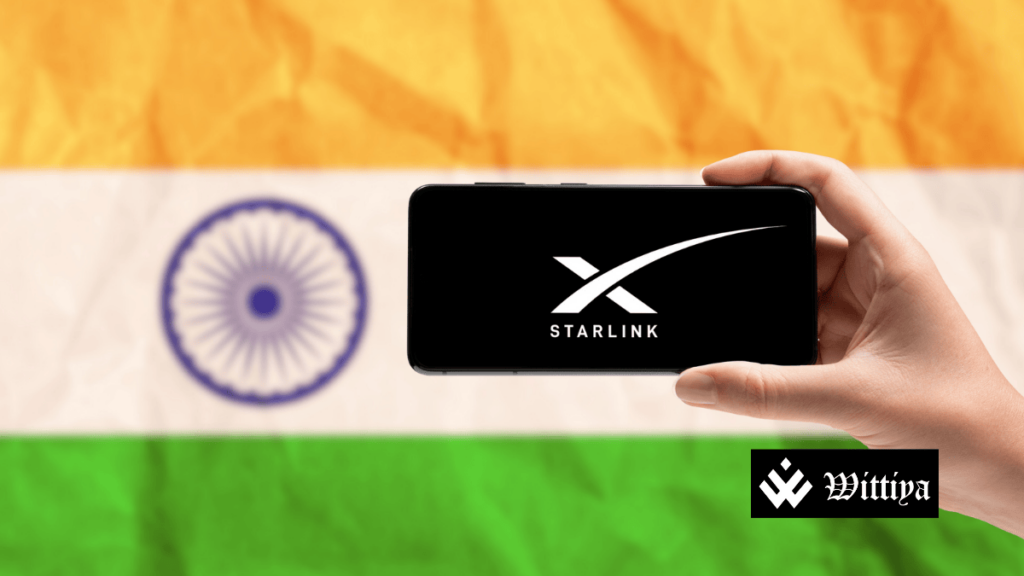Starlink, the satellite internet service by SpaceX, is facing challenges in India due to its high pricing, which is 10-14 times higher than broadband offerings from Reliance Jio and Bharti Airtel. Analysts suggest that without government subsidies, Starlink’s growth will remain limited to niche markets such as small businesses and remote enterprises. Despite collaborations with Indian telecom giants, the lack of regulatory approvals and spectrum allocation continues to hinder Starlink’s expansion.
Starlink, the satellite internet service operated by SpaceX, is unlikely to see mainstream adoption in India due to its prohibitively high pricing, which is 10-14 times higher than broadband offerings from major Indian telecom providers like Reliance Jio and Bharti Airtel. Analysts suggest that without government subsidies, Starlink’s market in India will remain limited to niche segments such as small businesses and enterprises in remote locations.
Premium Pricing and Affordability Concerns
According to a report by Bernstein, Starlink’s pricing in India carries a 9-175% premium over local broadband operators in key Asian markets, excluding its already expensive upfront equipment costs. India, which has some of the lowest data costs globally, presents a scalability challenge for Starlink due to this high pricing.
Additionally, the cost of customer premises equipment (CPE) exceeds $180 (₹15,700), making it difficult for mass adoption. While Starlink offers speeds of up to 200-250 Mbps, analysts at Bank of America (BoFA) highlight potential capacity constraints due to the limited number of satellites serving India.
Reliance Jio and Airtel’s Partnership with SpaceX
Despite the cost concerns, Reliance Jio and Bharti Airtel have announced partnerships with SpaceX to bring Starlink to India, aiming to improve connectivity in rural and underserved areas. Under this collaboration, SpaceX will supply Starlink equipment and services through Jio and Airtel’s retail networks.
Jio has positioned Starlink as a complementary service to JioAirFiber and JioFiber, targeting locations where traditional fiber and fixed wireless access (FWA) are unavailable. However, regulatory approvals and spectrum allocation remain a roadblock for Starlink’s full-scale operations in India.
Limited Retail Market Potential
Analysts at JP Morgan and Citi Research believe that Starlink’s high pricing will keep its retail market niche, focusing mainly on businesses and SMEs rather than individual consumers.
In ASEAN markets, Starlink’s pricing carries a 100-180% premium over fixed broadband services, with retail plans priced between $45-$100 (₹4,000-₹8,700), further reinforcing the idea that its target audience will be select business users in remote regions.
Future of Satellite Broadband in India
Axis Capital reports that Starlink is unlikely to become a mainstream service in India, as 5G and FWA solutions have already addressed fiber constraints. The high cost of hardware and data plans limits its appeal to businesses needing premium high-speed connectivity rather than mass consumers.
Currently, SpaceX operates over 60% of global satellites, with more than 7,000 Starlink satellites in orbit and a subscriber base of 4 million users, adding approximately 60,000 new customers weekly. In the U.S., T-Mobile plans to launch a direct-to-cell service in partnership with SpaceX by mid-2025, a move analysts expect SpaceX to replicate in other countries through telecom tie-ups.
While Starlink’s satellite internet has the potential to bridge connectivity gaps in rural India, its premium pricing and regulatory challenges make it difficult to compete with existing telecom giants like Reliance Jio and Bharti Airtel. Unless pricing models become more competitive or government subsidies are introduced, Starlink’s presence in India is expected to remain a niche offering rather than a mass-market solution.
Also Read: From Foes to Friends: The Secret Behind the Airtel, Jio, and Starlink Deal
